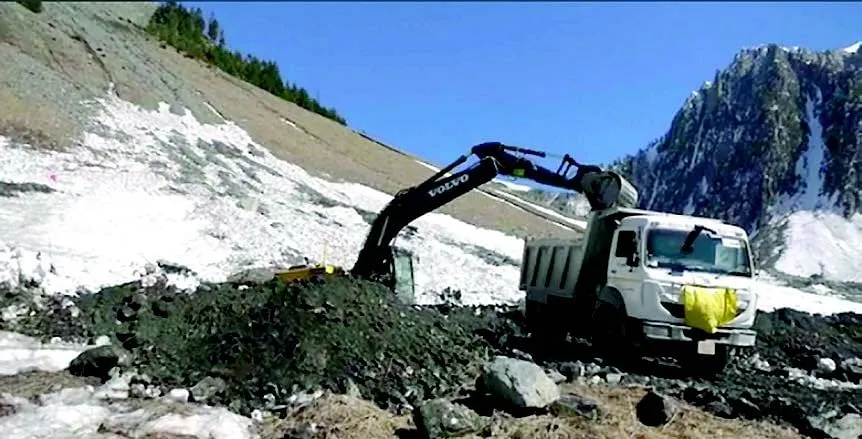Amid the tough terrain and harsh winter conditions, the work on the much-awaited Zojila Tunnel is continuing on both east and west portals at Menamarg and Baltal side.
The first phase of blasting of Zojila Tunnel was carried out on both sides of the Srinagar-Leh highway from Kargil and Ganderbal on October 15 last year with Union Minister for Roads Transport and Highways (MORTH) NitinGadkari virtually initiating the first blast on the Zojila Tunnel project on NH-1.
This marked the commencement of work on Asia’s longest 14.5-km long Zojila Tunnel being built up on the strategic Srinagar-Leh highway.
Hyderabad-based construction companyMegha Engineering and Infrastructure Limited (MEIL), which has been entrusted with construction of this key tunnel by the Government of India-owned National Highways and Industrial Development Corporation (NHIDCL) started the work and continued it amid harsh conditions during winter during the last four months.
Executive Director NHIDCL Sanjeev Malik told Greater Kashmir that throughout winter the mobilisation and some construction work remained under progress and during that period the workers, engineers and everyone associated with the project got an experience of the working conditions which would prove beneficial in the coming times.
He said that the construction company had already begun the job from the eastern portal in Minimarg area on Kargil side and western portal from Sonamarg side and in the coming days as the conditions improve, the work would be expedited.
On Thursday, Managing Director NHIDCL, K KPathak also visited the construction site of Zojila Tunnel at BaltalSonamarg to have firsthand appraisal about the work progress made on the tunnel.
Deputy Commissioner Ganderbal, ShafqatIqbal; Executive Director-III, Sanjiv Malik; Officiating Executive Director, RO-Ladakh and Srinagar, BK Chand and other concerned officials accompanied him.
During the visit, the MD reviewed the ongoing work on the ground of east and west portals of Zojila Tunnel and was briefed about the pace and progress made on the tunnel.
The team was informed that despite the snowfall, the work process was going on smoothly on Zojila Tunnel.
After an on ground review of east and west portals of Zojila tunnel, the team visited and reviewed the progress of the approach road of Zojila Tunnel where two more tunnels are being constructed.
Pathak directed the officials of the executing agency to expedite pace of work on the ambitious project so that targets are achieved within the stipulated time frame.
He also directed the authority’s engineers to closely monitor all the construction and planning activities.
The 14.15-km long Zojila Tunnel once completed would facilitate all-weather road connectivity between Srinagar and Kargil which mainly remains closed during winters due to heavy snowfall in the area and would also reduce travel time.
The tunnel would also benefit the social and economic development of the region apart from boosting the tourism in Sonmarg as well as Ladakh regions.
General Manager MEIL Prashant Kumar said the company would have to accomplish it by all means as it was critical for adhering to the completion time of the tunnel that had been fixed at 72 months.
He said that given that several tunnel projects were coming up in J&K and neighbouring areas, the company was sticking to the tested techniques.
Kumar said the New Austrian Tunnelling Method would be used for Zojila Tunnel.
This method involves not the use of a tunnel boring machine but of blasting by explosives inside the tunnel to carve out a horse shoe-shaped bi-direction tunnel that would be 9.5-meters wide and 7.57-meters high, and a daily target of 2.5 metretunnelling on each front was expected to be achieved.
About the challenges inside the tunnel, Prasant said that in tunnelling every meter was a challenge in itself.
He said that hard rock was always better than fractured one or loose material “but we expect both of these”.
Once inside the tunnel, though, the workers would not have to encounter the harsh cold climate outside, which goes down to minus 30 to 35 degree Celsius in Minimarg and below minus 20 degree Celsius at the Sonamarg end.
“Inside the tunnel, the temperature is always on the higher side,” Prashant said. “Work will start in full swing after the winter and till then we have time to stockpile all the material as well as move the machinery.”






